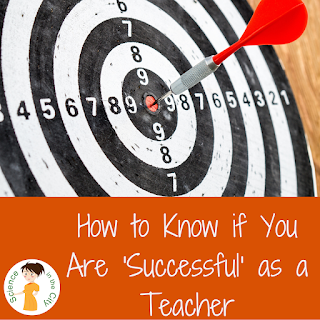How to know if you are successful as a teacher
One of the down sides of teaching is that you may never feel like you have done enough. It can be overwhelming. Particularly now, when we are doing distance learning and transitioning to new methods of teaching, in many cases while taking on responsibilities at home with our own children, it may not feel like you are “doing a good job” or “being successful.”First of all, there are answers, and no hard rules right now for what you should be doing. All bets are off. You are doing enough. You are doing your best to help your students and take care of yourself. You are doing it right.
So how do you measure success? Many of our common measures of teaching success are not fair to teachers (as well know), or only tell part of the story. For example, test scores. We all know about that. Many of these ‘measures’ are out of our control and influenced by so many other factors, that they are really not measuring teachers’ success at all.
So how do you measure and evaluate your own success?
This question came up in our Facebook Group a while ago, and I would like to share some of those responses here, as well as add a few others that are specific to some of the more recent events.From the Facebook Group
- From member Louette McInnes: New teachers take note. When I started teaching, an experienced teacher told me that if I had 'one really great lesson a day', that was success. He also said it would take me a year to get one course set up so I knew it would be really successful and do what I wanted it to do. He was right.
- Don’t compare yourself to others - look at your own progress, look at the interactions and progress that you can see with individual kids
- Are kids respectful (for the most part), are they engaged? Are they learning?
- Are they thinking?
- What do they know that they weren’t able to do when they came to you?
- And more in this post
In addition, right now, some things are more important than academics.
- Are you building or maintaining relationships with your students (and their families)?
- Are you working to meet your students needs (both academic and otherwise), while taking care of yourself?
- Are you helping students to make some progress, within their other constraints?
- Are you doing the best you can? Not giving up? Trying some creative ideas, even if they don’t all work? Taking some risks with the hope of improving?
Keep building relationships, keep thinking, being creative, and building relationships with your students and the rest will come. Teaching is not a place for instant gratification. You won’t start your teaching career, or your school year, and have it all be successful. It’s a slower process. You will make gradual gains, and have ups and downs. But over the long haul, as you look back, you will absolutely see signs that you have been successful!!









